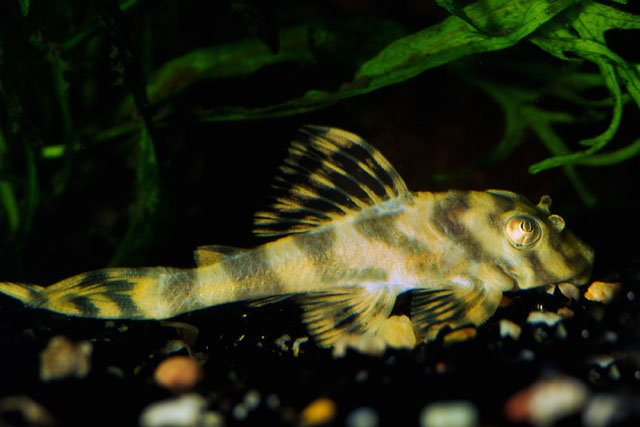| Loricariidae (Armored catfishes), subfamily: Hypostominae |
| 15 cm TL (male/unsexed); max.weight: 43.0 g |
|
demersal; freshwater; pH range: 5 - 7.5; dH range: 2 - 20 |
| South America: Brazilian Amazon and lower reaches of the Rio Tapajos, Rio Madeira and Xingu; Río Ventuari of Venezuela, southern tributaries of the Amazon from the Madeira to the mouth, and the Rios Uatumã, Trombetas, Capim, and Maranhão. One collection of what appears to be this species was also recorded from the upper Río Guaviare of Colombia. |
|
Dorsal spines (total): 2-2; Dorsal soft rays (total): 7-7; Anal spines: 1-1; Anal soft rays: 4-4. Distinguished from its congeners by having the dorsal color of the head with a wedge of dark pigment on the snout and a bar from the posterior edge of the frontal to just behind the parieto-supraoccipital (the pigment may alternatively appear as dark mottling and/or the anterior marking may appear, particularly in juveniles, in the form of a dark E on the snout) (Ref. 77026). |
| Specimens from Venezuela were collected from rocks in runs (Ref. 77026). Nocturnal species; feeds on algae (Ref. 13371). Aquarium keeping: feeds on plants and roots; in groups of 5 or more individuals; minimum aquarium size 80 cm (Ref. 51539). |
|
Least Concern (LC); Date assessed: 07 November 2018 Ref. (130435)
|
| harmless |
Source and more info: www.fishbase.org. For personal, classroom, and other internal use only. Not for publication.

